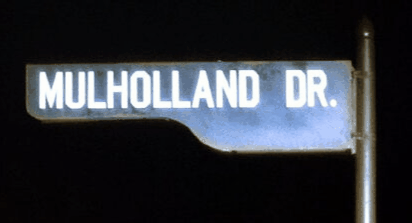Joan Eardley: Paintings and Drawings – Until 22nd February
Toil: Rural and Urban Working Life – Until 22nd February
Recent Acquisitions – Until February
David Musgrave – Until January
The City Arts Centre’s current selection box of exhibitions covers everything from weaving to a Big Brown Dog, Basil Blackshaw’s memorable painting in The Public Eye, a collection of otherwise pallid works drawn from the Arts Council of Northern Ireland Collection. Joan Eardley’s work is showcased with a few studies of Glaswegian slums and a small assortment of expressionist landscapes painted in the dreich cliff tops of Catterline in the early 1960s. These works are well known, and there are no surprises in the display. They would have benefited more from inclusion in the adjacent show Toil, which explores the themes of rural and urban working life. The main theme here is the dramatic shift from Romanticism to Realism that took place in Scottish art in the latter part of the 19th century. It’s a story oft told, and not particularly compellingly by this limited exhibition, dominated as it is by literal readings of work in the form of images of domestic labourers, peasants, industrial workers and keelies. The odd shrewd juxtaposition is made, for example, between James Wingate’s idealised Harvest in Arran and Robert McGregor’s gritty Gathering Stones, which is attuned with the social Realism pioneered by Gustave Courbet in the mid 19th century. The problem is that, with the possible exception of Walter Geike and Ken Currie, these artists are no Courbets, even in Scottish terms they are largely third rate. Currie’s early charcoal drawing Peace, Build the Future, a mixture of youthful idealism and doddery Socialist Realism, is the best here, its naïveity making Howson’s sentimental caricature The Noble Dosser look belligerent in comparison. Perhaps lack of artistic merit wouldn’t matter if Toil told us something meaningful about work, the countryside or the city. It is a wasted opportunity to explore what ‘toil’ means in the post-industrial, post-Cold War, urbanised Scotland we live in.
This might have been partly remedied with the inclusion of Chad McCail’s gouache drawing People Take Turns to do the Difficult Jobs, currently on display amongst Recent Acquisitions bought for Edinburgh’s citizens by the Jean F Watson Bequest. The new additions focus on artists and images associated with Edinburgh, such as local artist Sandy Moffat, who is represented by his drawing of Lallans poet Sydney Goodsir Smith. Insularity is a questionable acquisitions policy. Edinburgh Museums might want another Elizabeth Blackadder but do they really need six? Do Edinburghers need two paintings by one-drip wonder Callum Innes? Although resident in Dundee, Nathan Coley slips through the Reekie radar by photographing himself in Princes Street Gardens Reading Burns to the Scott Monument and Waiting on the Scottish Parliament in Dumbiedikes. These are not Coley’s best works, and were, I suspect, purchased mainly for their parochial subject matter. Focus on Edinburgh artists must be intensified if the city is ever to generate credible contemporary art, but selectors should heed the populist mistakes made by Glasgow Museums. They will also need to pay far more attention to less established artists who will flee the capital if it fails to give them the support they deserve. Thankfully, there are a few enlightened purchases here, Kate Gray’s Mission, a miniature light box version of her Collective Gallery installation in 2001, and a paper halo by Jonathan Owen, which pillories male heroism and sporting prowess. On the whole, however, this collection is too slow on the uptake and will not compete with that currently being acquired by Glasgow Museums to right the wrongs of the Museum of Modern Art debacle.
At Transmission, master of understatement David Musgrave exhibits epoxy putty sculptures and a range of fine liner drawings of tiny skull and crossbones. Many Lifeless Heads and Bones poses what the minimum amount of pictorial information needed to recognise a ‘dead’ head might be. Minute crosses represent ‘dead’ eyes, a novel convention popularised by adult cartoons such as Viz and The Simpsons. Musgrave’s sculptures, cast from randomly squeezed plastercine, are frozen at the point where we stop seeing jumbles of volumes or pictorial conventions and start to ‘see in’. Some resemble roughshod heads, but only just. “I stop fiddling around when it becomes readable”, says Musgrave. These quiet works ask candid questions about how pictures and sculptures work, but such enquiry bears rich fruits.
City Art Centre, Edinburgh Joan Eardley: Paintings and Drawings – 3 Stars Until 22nd February Toil: Rural and Urban Working Life – 2 Stars Until 22nd February Recent Acquisitions – Until 22nd February Transmission, Glasgow David Musgrave – Until 18th January
City Art Centre, Edinburgh Joan Eardley: Paintings and Drawings – 3 Stars Until 22nd February Toil: Rural and Urban Working Life – 2 Stars Until 22nd February Recent Acquisitions – Until 22nd February Transmission, Glasgow David Musgrave – Until 18th January / by Kneel, Mulholland: Drive! is licensed under a Creative Commons Attribution-NonCommercial-NoDerivatives CC BY-NC-ND 4.0


